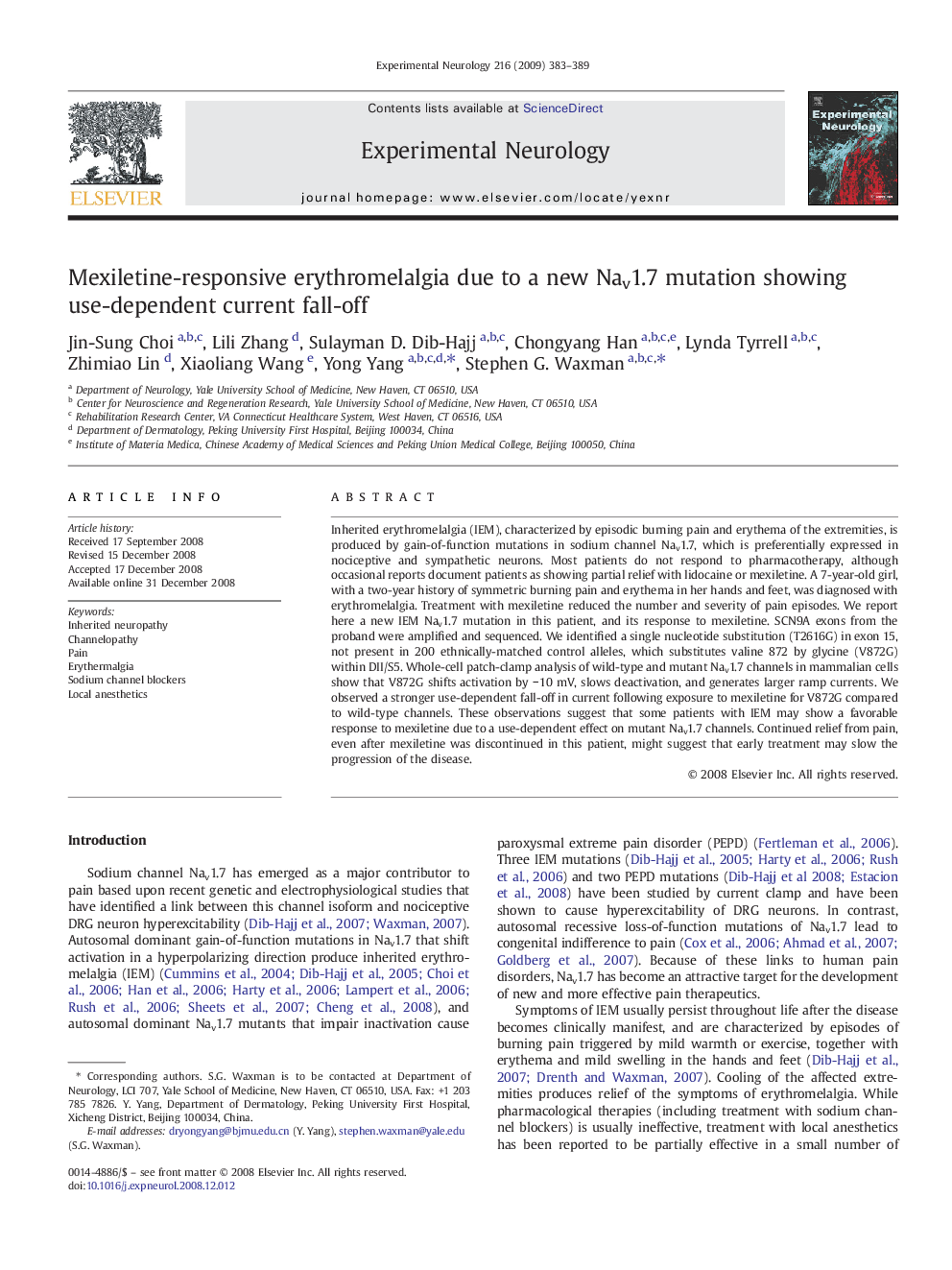| Article ID | Journal | Published Year | Pages | File Type |
|---|---|---|---|---|
| 3056492 | Experimental Neurology | 2009 | 7 Pages |
Inherited erythromelalgia (IEM), characterized by episodic burning pain and erythema of the extremities, is produced by gain-of-function mutations in sodium channel Nav1.7, which is preferentially expressed in nociceptive and sympathetic neurons. Most patients do not respond to pharmacotherapy, although occasional reports document patients as showing partial relief with lidocaine or mexiletine. A 7-year-old girl, with a two-year history of symmetric burning pain and erythema in her hands and feet, was diagnosed with erythromelalgia. Treatment with mexiletine reduced the number and severity of pain episodes. We report here a new IEM Nav1.7 mutation in this patient, and its response to mexiletine. SCN9A exons from the proband were amplified and sequenced. We identified a single nucleotide substitution (T2616G) in exon 15, not present in 200 ethnically-matched control alleles, which substitutes valine 872 by glycine (V872G) within DII/S5. Whole-cell patch-clamp analysis of wild-type and mutant Nav1.7 channels in mammalian cells show that V872G shifts activation by − 10 mV, slows deactivation, and generates larger ramp currents. We observed a stronger use-dependent fall-off in current following exposure to mexiletine for V872G compared to wild-type channels. These observations suggest that some patients with IEM may show a favorable response to mexiletine due to a use-dependent effect on mutant Nav1.7 channels. Continued relief from pain, even after mexiletine was discontinued in this patient, might suggest that early treatment may slow the progression of the disease.
